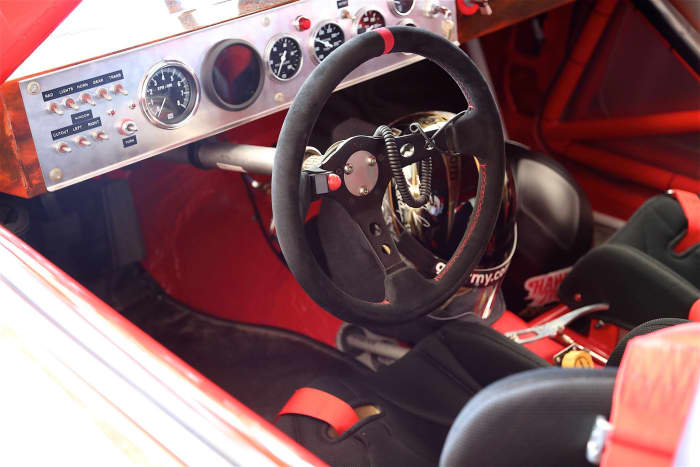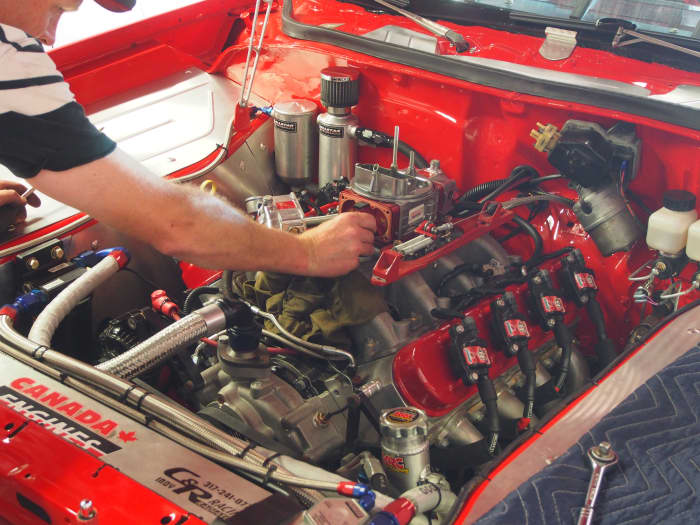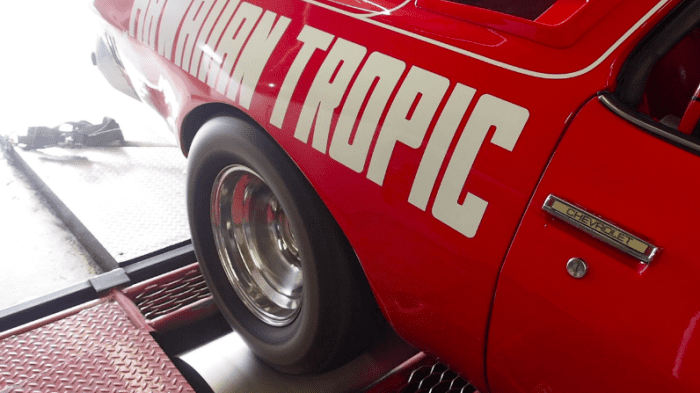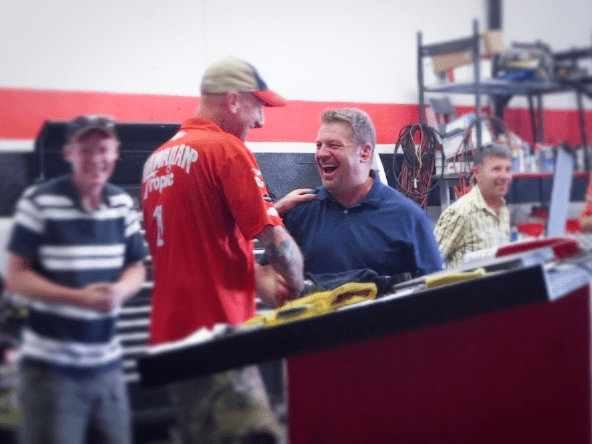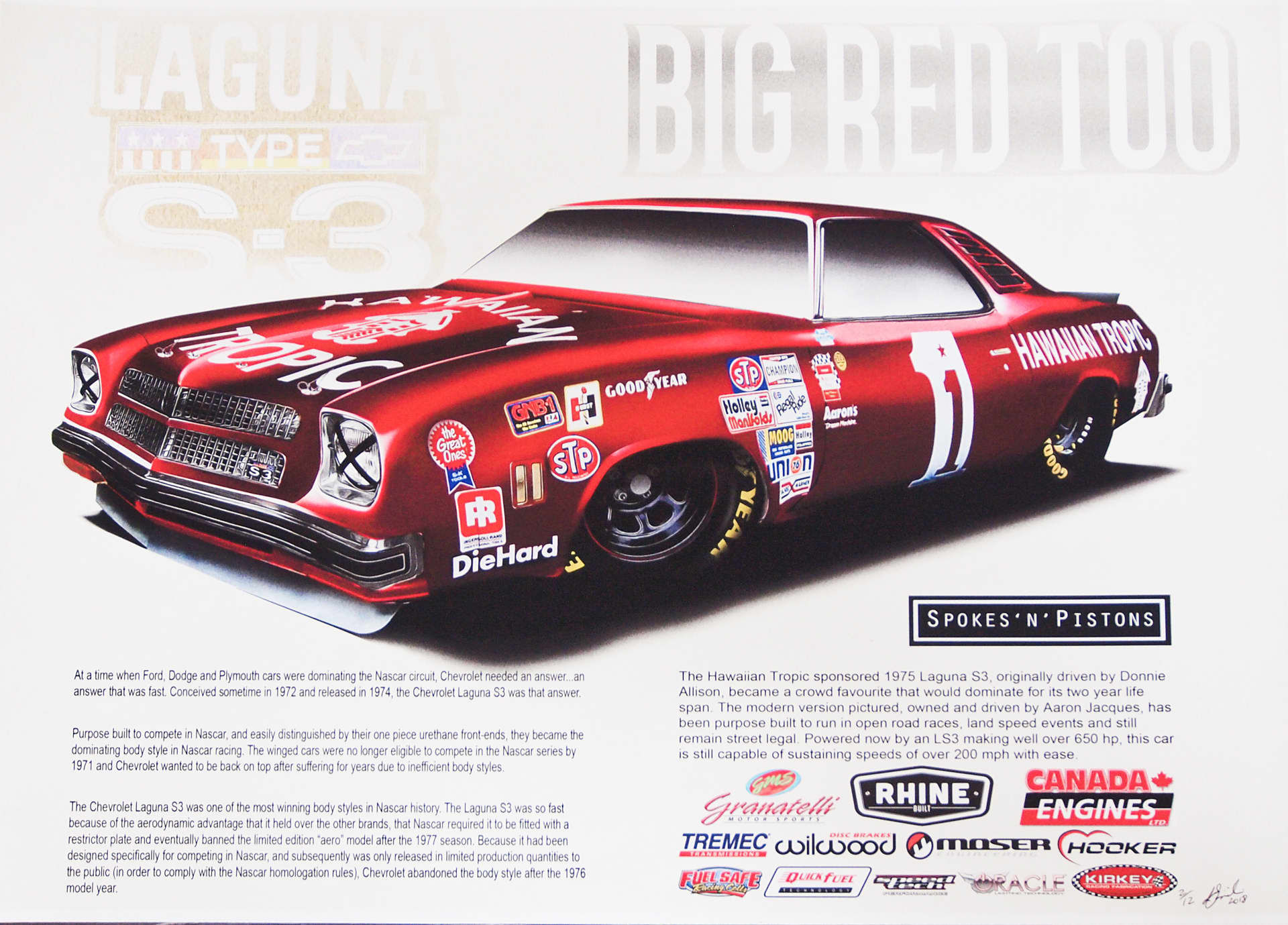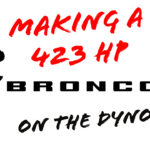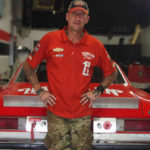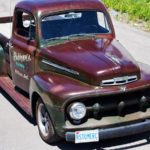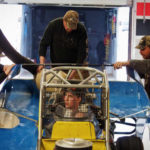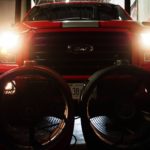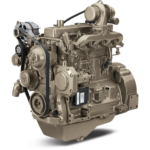Owner: Aaron Jacques
Aaron built this ’75, Laguna S3 into a beautiful Hawaiian Tropic NASCAR tribute. This was his father’s favourite NASCAR back in the mid-seventies. Aaron built the S3 as a multi-purpose vehicle so that he could compete in open-road & land speed races, but still be able to take it for a cruise down the highway.
So far, Aaron has run ‘Big Red Too’ at the Loring Timing Association Maine Event, Kershaw South Carolina Road Course, Charlotte Motor Speedway Roval Test, Martinsville Virginia Fast Friday, GASY 1km Runway Shootout and Race the Runway 2016 & 2017 (2018 coming up soon). He’s still planning to run the Silver State Classic Challenge and Bonneville Speedweek.
Laguna S3 specs
YEAR: 1975
MAKE: CHEVROLET
MODEL: LAGUNA S3 NASCAR
ENGINE: 415ci LS3 STROKER (built by CE PERFORMANCE)
IGNITION: MSD 6LS
INTAKE: GM PERFORMANCE SINGLE PLANE
CARB: HOLLEY QUICK FUEL SS850CFM
TRANSMISSION: TREMEC T-56 MAGNUM with QUARTERMASTER 7.25″ TRIPLE DISC CLUTCH
REAREND: MOSER M9 with 4.30:1 GEAR
The challenge
When Aaron first called us, he told us he’d heard that International Dyno Authority, was the “place to go for dyno tuning,” and that he was on his way from North Carolina to visit us in Ottawa, Ontario. He said his S3 wasn’t performing the way it used to . . . that it seemed sluggish and a little bit lazy. We readily accepted the challenge to work on a Laguna S3, anxious to see what kind of torque and horsepower we could squeeze out of this ’75 Chev!
Baseline dyno test
Once Aaron had unloaded the S3 and we had it strapped to the chassis dyno, it was time for a baseline pass. The purpose of a baseline pass is to establish what kind of power is being made before we begin any tuning. Once we know what we’re working with, we can go about analyzing how to make performance gains.
Just as Aaron had told us, this engine was not performing well. Horsepower and torque were underwhelming and the engine sounded rough.
Tuning the Laguna S3
We rolled up our sleeves and went to work looking at the different aspects that might be slowing this engine.
In the dyno business, we look at fuel, fuel, fuel, and fuel. To get there, we first looked at the ignition curve and at his rev limit. From this data, we adjusted the carb to create a fuel and ignition curve that we could start with.
We saw the results immediately on the next pass. We had built another 48 HP and an extra 73 ft.lbs. of torque. We made a few more adjustments and added another 28 horses to the stable.
Dyno tuning is a process of testing various hypotheses and extrapolating from the results. When we tested our next ignition curve, we lost 38 of the HP we had built. So we started looking more closely at the S3’s ignition components, and just as we thought, the cylinders were firing unevenly. We decided to replace the ignition box, and on the next pass, we saw significant improvements. We were now up 98 HP and 122 ft.lbs. of torque from the initial baseline run.
We were getting happier, but we still weren’t satisfied with the results. We started pulling and inspecting each spark plug and discovered one of the plugs looked brand-new. Cylinder 3 wasn’t firing, so we changed all of the coils (as this was an individual coil pack engine).
Dyno tuning results
After changing the coils, we added a bit more main jet on top of the tuning adjustments we’d already made. When Aaron turned the key, the S3 sprang to life with a smooth, throaty rumble.
On the final pass, fully tuned and with all eight cylinders firing, that engine screamed and was now delivering an additional 176 HP and punching out 210 more ft.lbs. of torque* than it was when it rolled through the door! Aaron was thrilled with the results. Finally, that 415 LS3 was running the way it was meant to!
While Aaron was shouting out his satisfaction and happily shaking hands and slapping backs, we were just as happy as he was. Whoever built this motor did a fantastic job and we were glad to be able to bring it back to where it once was. It was a pleasure working with Aaron and we were glad to have a satisfied customer and a new friend.
 Marc Chartrand
Marc Chartrand


